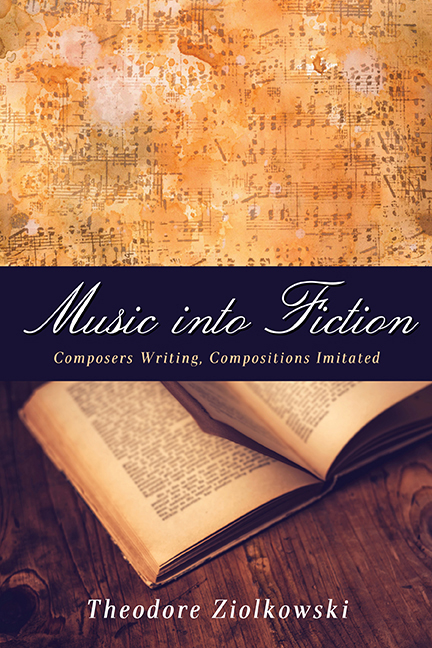8 - Leverkühn's Compositions
from Finale: Composers Setting Fictional Compositions
Published online by Cambridge University Press: 09 May 2017
Summary
Thomas Mann's Doktor Faustus (1947) may be characterized in several senses as a musical novel. It is first and foremost, according to the intentionally archaic term used in the subtitle: “Das Leben des deutschen Tonsetzers Adrian Leverkühn erzählt von einem Freunde” (The Life of the German Tone-Setter Adrian Leverkühn as Told by a Friend). As such, it relates the composer's life from his birth in 1885 to his death in 1940, including details of his early musical experiences, his decision following the initial study of theology to devote his life to music, his (imagined) contract with the Devil symbolized by his syphilis, detailed descriptions of his compositions, and the course of his musical career.
Second, the work includes extensive passages on the history and theory of music, including discussions of music from 1200 to the present and referring in passing to more than seventy different composers; detailed analyses of four famous musical works by Wagner (Prelude to Act 3 of Die Meistersinger) and Beethoven (Piano Sonata opus 111, the Große Fuge from the late quartets, and the Fidelio overture); and in chapter 22 a knowledgeable music-theoretical description of twelve-tone or serial composition in the manner (as Mann acknowledged in a note appended to later editions) conceived by Arnold Schoenberg but attributed in the novel to Adrian Leverkühn. In his account of the novel's composition Mann (1875–1955) mentions with great affection his contacts with such composers as Igor Stravinsky, Ernst Krenek, and Hanns Eisler as well as his personal indebtedness to Schoenberg and, in particular, to Theodor W. Adorno, who commented in detail on musical passages in the manuscript.
Third, in that same account Mann stresses the novel's musical structure, referring to the “polyphonous” and “contrapuntal” interweaving of the two time-levels: the period and circumstances of Leverkühn's life and the historical events occurring during the fictional narrator's period of composition (1943–45).
- Type
- Chapter
- Information
- Music into FictionComposers Writing, Compositions Imitated, pp. 199 - 221Publisher: Boydell & BrewerPrint publication year: 2017

